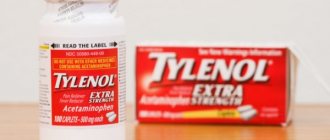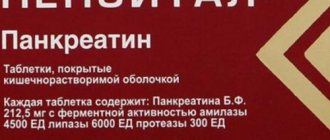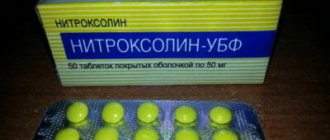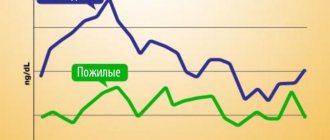Instructions
The medicine has instructions for use, which you must read. This is necessary in order to avoid unpleasant consequences.
Indications
The instructions for the drug state that Zantac is prescribed for diseases such as:
- Ulcers associated with H. pylory;
- Ulcers associated with long-term use of NSAIDs;
- Ulcers that appeared after surgery;
- Reflux esophagitis;
- Chronic dyspepsia;
- Zollinger-Ellison syndrome.
Zantac is also very often prescribed to prevent conditions such as:
- Any type of ulcer in seriously ill people;
- Mendelssohn's syndrome;
- Recurrence of bleeding from ulcers.
Application
This medicine should be taken according to the instructions.
Pills
To treat stomach ulcers, adults are prescribed 150 mg of the drug 2 times a day or 300 mg in the evening. Typically, ulcers heal within 4 weeks;- For the treatment of duodenal ulcer , which is caused by H.pylory, the drug Zantac is prescribed 2 times a day. Taking this medication should be combined with other drugs such as Amoxilicin (750 mg) and Metronidazole (500 mg). The latest medications are taken 3 times a day. Treatment lasts 2 weeks, however, if the condition does not improve, then the course of therapy is extended for another 14 days;
- For the treatment of postoperative ulcers, the drug is prescribed at a dosage of 150 mg 2 times a day. Treatment lasts on average 30 days;
- When treating acute reflux esophagitis, doctors prescribe the drug in a dosage of 300 mg once a day or 150 mg, but then it is taken 2 times. Treatment lasts about 8 weeks. If required, therapy can be extended up to 12 weeks;
- To effectively eliminate Zollinger-Ellison syndrome, the drug is prescribed at an initial dosage of 150 mg 3 times a day. In the future, the dosage can be increased or decreased;
- If a person has been diagnosed with chronic dyspepsia, then the medicine is prescribed 2 times a day. Treatment lasts 42 days;
- To prevent bleeding from ulcers (if the patient can already eat independently), the drug is prescribed in a dosage of 150 mg 2 times a day.
For children, when treating peptic ulcers, the doctor prescribes 2-4 mg per 1 kilogram of weight 2 times a day. The maximum permitted dosage is 300 mg.
Solution
Use of this type of medicine:
- Intravenous administration (from 2 minutes) of 50 mg of the drug, diluted to 20 ml. The medicine must be administered every 8 hours;
- Intramuscular administration of 50 mg of the drug. It must be administered every 7 hours.
- To prevent bleeding from ulcers, Zantac is administered at an initial dosage of 50 mg intravenously.
- To prevent Mendelssohn's syndrome, the drug is prescribed at a dosage of 50 mg intravenously one hour before anesthesia.
- The medicine is taken through the solution until it becomes possible to take tablets.
Release
The tool can be presented in the form:
Film-coated
tablets The drug contains ranitidine, as well as triacetin, magnesium stearate, cellulose;- Effervescent tablets . The drug contains ranitidine, as well as sodium bezoate, povidone K30, grapefruit and orange flavors, sodium bicarbonate;
- Solution . 1 ml of solution contains 25 mg of the main substance, as well as sodium chloride, potassium, injection water, nitrogen.
Interaction
When taking Zantac together with antacids, as well as sucralfate in high dosages (up to 2 g), absorption of ranitidine may begin. That is why the break between taking these medications should be at least 2 hours.
When Zantac is taken together with drugs that depress the bone marrow, there is a risk of developing neutropenia.
The drug does not interact in any way with drugs such as theophylline, lidocaine, propranolol, warfarin, diazepam and phenytoint.
The active substance included in the drug inhibits the metabolism of aminophenazone, buformin, phenazone, hexobarbital, and glipizide.
As a result of increased gastric acidity when taking the drug together, a decrease in the absorption of ketoconazole and itraconazole may occur.
Indications for use
- Treatment and prevention of exacerbations of gastric and duodenal ulcers;
- stomach and duodenal ulcers associated with taking NSAIDs;
- reflux esophagitis, erosive esophagitis;
- Zollinger-Ellison syndrome;
- treatment and prevention of postoperative, “stress” stomach ulcers;
- prevention of recurrent bleeding from the upper gastrointestinal tract;
- prevention of aspiration of gastric juice during operations under anesthesia (Mendelssohn syndrome).
Side effects
Taking the medicine in tablet form may cause side effects such as:
- Drowsiness, blurred vision, hallucinations, depression, headache;
- Decreased blood pressure;
- Diarrhea or constipation, hepatitis;
- Thrombocytopenia, as well as leukopenia;
- Myalgia, as well as arthralgia;
- Impotence, decreased libido, amenorrhea, gyneomastia;
- Rash, bronchospasm, anaphylactic shock, hypotension, edema;
- Mumps, as well as baldness.
Taking the medicine by injection may cause side effects such as:
Arrhythmia, vasculitis, bradycardia, AV block, decreased blood pressure;- Leukopenia, pacytopenia, anemia, bone marrow aplasia, agranulocytosis;
- Amenorrhea, gynecomastia, breast swelling (in men), decreased libido, impotence;
- Vomiting, diarrhea, constipation, dry mouth, hepatitis, jaundice, pancreatitis;
- Nephritis, arthralgia, myalgia;
- Skin rash, urticaria, fever, bronchospasm;
- Alopecia.
Contraindications
According to the instructions, you should stop taking Zantac if the patient:
- Porphyria (acute);
- The occurrence of an allergy to any components.
The medicine is contraindicated:
- Small children under 12 years of age;
- Pregnant girls.
The drug is prescribed with extreme caution for:
- Liver or kidney failure;
- Cirrhosis of the liver.
During pregnancy
taking medications during pregnancy . This is due to the fact that the drug can have a negative effect on the fetus.
In addition, you should avoid taking this medication while breastfeeding your baby. If it is not possible to replace it with an analogue, then the child must be switched to artificial formula.
Similar drugs:
- Omez Capsule
- Omeprazole Capsule
- Ortanol Capsule
- Omez D Capsule
- Calcium carbonate Substance-powder
- Zulbeks Oral tablets
- Rabeprazole Oral tablets
- Quamatel Lyophilisate for the preparation of a solution for intracavernous administration
- De-Nol Oral tablets
- Metronidazole Injection solution
** The Drug Directory is intended for informational purposes only. For more complete information, please refer to the manufacturer's instructions. Do not self-medicate; You should consult your doctor before starting to use Zantac. EUROLAB is not responsible for the consequences caused by the use of information posted on the portal. Any information on the site does not replace medical advice and cannot serve as a guarantee of the positive effect of the drug.
Are you interested in Zantac? Do you want to know more detailed information or do you need a doctor's examination? Or do you need an inspection? You can make an appointment with a doctor - the Euro lab is always at your service! The best doctors will examine you, advise you, provide the necessary assistance and make a diagnosis. You can also call a doctor at home . Euro lab clinic is open for you around the clock.
** Attention! The information presented in this medication guide is intended for medical professionals and should not be used as a basis for self-medication. The description of the drug Zantac is provided for informational purposes only and is not intended for prescribing treatment without the participation of a physician. Patients need to consult a specialist!
If you are interested in any other drugs and medications, their descriptions and instructions for use, information about the composition and form of release, indications for use and side effects, methods of use, prices and reviews of drugs, or you have any other questions and suggestions - write to us, we will definitely try to help you.
Contraindications
Zantac is not prescribed for:
- Breastfeeding;
- Pregnancy;
- Hypersensitivity to ranitidine/excipients;
- Acute porphyria, including a history.
In pediatrics, the drug is not used until the age of 12.
Caution should be exercised during the use of Zantac in case of renal/liver failure, if there is a history of cirrhosis of the liver with portosystemic encephalopathy.
Zantac effervescent tablets should be prescribed with caution to patients with phenylketonuria, due to the presence of aspartame in their composition.
Release form and composition
Zantac comes in the form:
- Effervescent tablets (dissolved in water);
- Film-coated tablets for oral administration;
- Solution for intravenous and intramuscular injections.
The active ingredient of the drug is ranitidine hydrochloride. One tablet (both effervescent and coated) contains 150 or 300 mg, and 1 ml of solution contains 25 mg.
Excipients:
- Effervescent tablets: sodium bicarbonate, anhydrous sodium monocitrate, sodium benzoate, povidone K30, aspartame, grapefruit and orange flavors;
- Film-coated tablets: methylhydroxypropylcellulose, magnesium stearate, triacetin, titanium dioxide, microcrystalline cellulose;
- Solution: injection water, sodium chloride, anhydrous sodium hydrogen orthophosphate, potassium dihydrogen orthophosphate and nitrogen.
Zantac is sold:
- Effervescent tablets – 6 and 10 pcs. in aluminum blisters or 15 pcs. in polypropylene tubes;
- Film-coated tablets – 10 pcs. in a blister, 1 or 2 blisters per package;
- Solution – in ampoules of 2 ml, 5 ampoules per package.
special instructions
Zantac may mask symptoms associated with gastric carcinoma. For this reason, before starting to use the drug in patients with gastric ulcers, the possibility of malignancy (cancerous degeneration of cells) must be excluded. The same is required for middle-aged and elderly people when they develop new or change existing signs of dyspepsia.
The effectiveness of ranitidine reduces smoking.
Zantac effervescent tablets contain sodium, which should be kept in mind by individuals who have limited sodium intake.
During the treatment period it is recommended:
- Do not consume food, drinks or other medications that can irritate the gastric mucosa;
- Refrain from driving a vehicle or performing potentially dangerous work.
Ranitidine reduces the absorption of ketoconazole and itraconazole. If it is necessary to use them simultaneously, Zantac is recommended to be taken after 2 hours.
The absorption of ranitidine is impaired by antacids and sucralfate, so at least 2-hour intervals should be observed between doses of these drugs.
Ranitidine, in turn, inhibits the metabolism of calcium antagonists, indirect anticoagulants, aminophenazone, phenazone, hexobarbital, buformin and glipizide.
When Zantac is used in combination with drugs that depress bone marrow, the risk of developing neutropenia increases.
Like all histamine H2 receptor blockers, Zantac may:
- Counteract the effect of histamine and pentagastrin on the acid-forming function of the stomach;
- Suppressing the skin reaction to histamine leads to false negative tests.
For this reason, Zantac should not be taken within 24 hours of a test or diagnostic skin test to detect an immediate allergic skin reaction.









